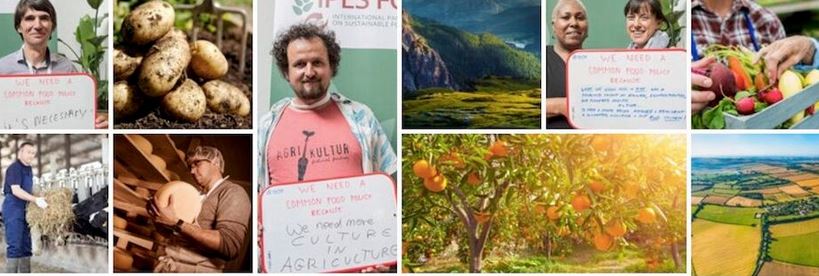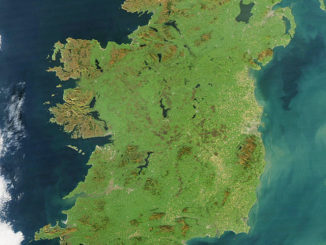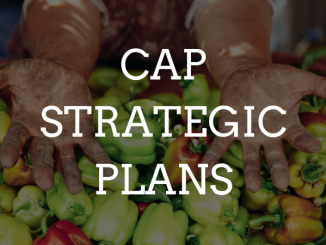The International Panel of Experts on Sustainable Food Systems (IPES-Food) launch the Common Food Policy for Europe in Brussels today (7th February). The report, to be launched at the European Parliament and the European Economic and Social Committee (EESC) puts forward 80 concrete reform proposals, developed over three years by 400 agri-food system actors.
A Common Food Policy will help address “climate change, halt biodiversity loss, curb obesity, and make farming viable for the next generation” according to IPES Food.
The report rails against powerful lobbies, while also pointing to the benefits of bringing more voices in, via improved democratic processes. It “highlights the conflicting objectives of existing policies, and the potential for new synergies to be established. The report maps out a new governance architecture for food systems, and puts forward a concrete vision of the policy reform and realignment that is required in order to deliver sustainable food systems” according to the executive summary of the report.
Download the Full Common Food Policy Report
Olivier de Schutter’s preface makes four key points:
1: Various sectoral policies are not as mutually supportive as they could be, and at worst, they cancel each other out. Agriculture, environment, health, trade, development cooperation, research and innovation: these policy areas are handled by separate ‘DGs’ in the European Commission and different committees in the European Parliament – yet they all influence how we produce and consume food, and what the future of our food systems will look like.
2: Social innovations abound in food systems from community supported agriculture to public procurement. Yet, there is a gap between policies developed at national and EU level, and those social, often citizens-led innovations.
3: Change shall only be possible if it takes place simultaneously across a range of sectors and if it is carefully coordinated within an overall strategy.
4: Governance reform is inevitable, and must be undertaken in a way that restores democracy and accountability to food systems.
Four justifications are put forward for a common food policy: policy integration, governance integration, governance for transition and democratic decision making.
A Common Food Policy blueprint is put forward with a package of reforms that are clustered under five key objectives, sequenced over the short, medium and long term.
Download the Full Common Food Policy Report
Five Key Policy Objectives
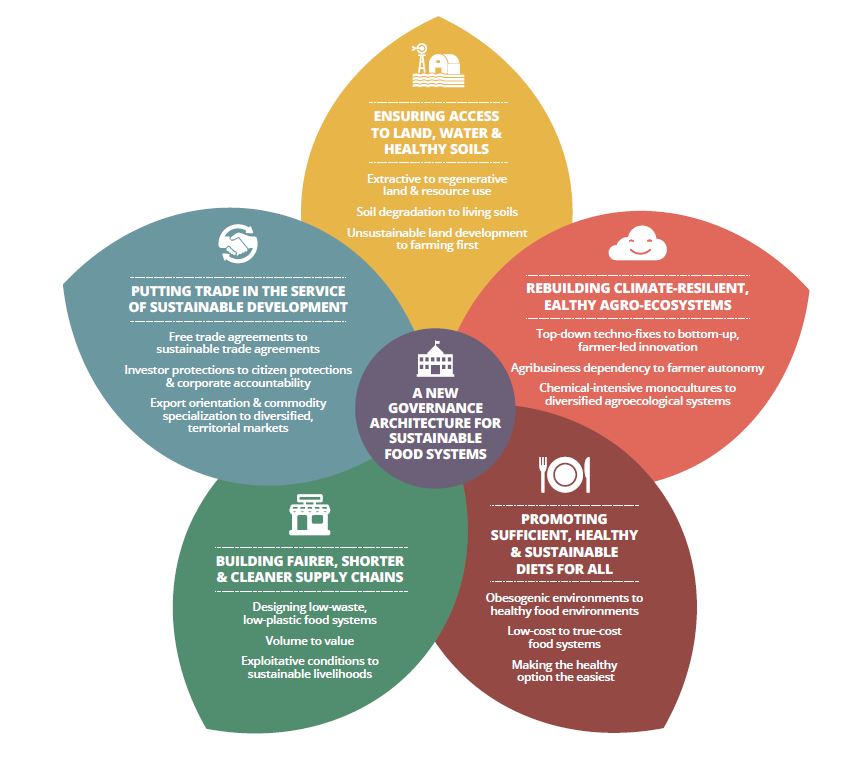
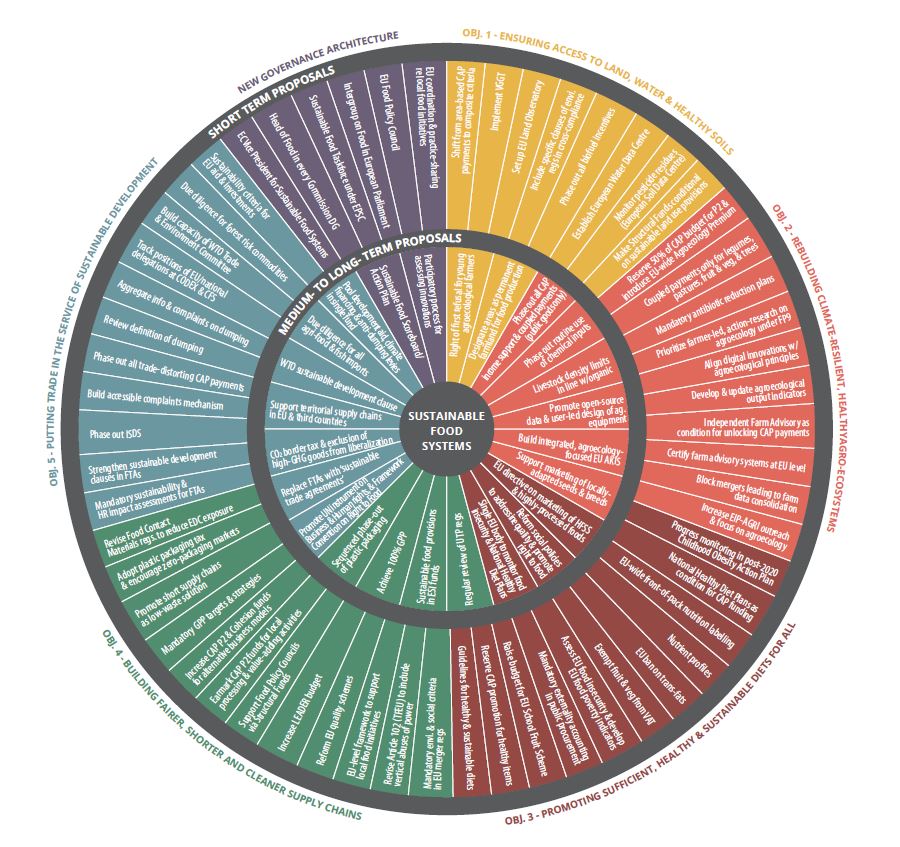
Analysis
ARC2020 sees much merit in the idea and implementation of a common food policy. The coherence and integrated nature of the common food policy is commendable, and at variance with the ad hocery of how CAP and other related policies (e.g. health, trade) have developed.
The common food policy chimes with the work ARC2020 did in earlier incarnations, such as the ARC Communication of 2010, which called for a “Common Agriculture, Food and Rural Policy ” and the later (2015) draft roadmap on Good Food – Good Farming and a living countryside. Moreover, the ongoing campaigning work of Good Food Good Farming, which ARC too is involved in, also chimes with the Common Food Policy. The participatory approach, involving 400 food system actors in developing the Common Food Policy, is also to be commended, and this too has similarities to the process ARC used in to develop its earlier documents.
It is the next stage that we find the most interesting, the blueprint for implementation. The above five objectives with three categories: gaps and disconnects in current policies; short-term policy proposals; medium to long term policy proposals. Indeed, it is in particular the short term policy goals which are most interesting for the current CAP reform process, in particular for objective one – ensuring access to land, water and healthy soils – and two rebuilding climate-resilient, healthy agro-ecosystems.
Right now, a new architecture for CAP is being discussed and proposed in and through the EU institutions. There is a new delivery model proposed and there is a new eco scheme proposed. How does – or can – this process IPES-food have led integrate into, and inform, the CAP reform process?
For example, the call for the introduction of “an EU-wide ‘agroecology premium’ as a new rationale for distributing CAP payments”. The proposed eco scheme could serve this purpose, if we take the phrase ‘agroecology premium’ as referring to a top up for best behaviour. (This idea of IPES Food’s may also be interpreted as a plan for all CAP payments). The proposed eco scheme will be compulsory to offer at member state level but voluntary, and enabling a premium, at the farmer level. Similarly, the new CAP’s proposed ‘enhanced conditionality’ already includes “crop rotation”, a proposal described as “beyond P1 conditionality” as a short term policy proposal in Objective 2.
Of course as Olivier de Schutter wrote last year here on ARC2020 “Proponents of progressive CAP reforms are stuck between a rock and a hard place:
Facing the prospect of inevitable budget cuts, they must choose which pieces of the pie to defend. Should they push for strong environmental protections in Pillar 1 – the part of the CAP most likely to be shielded from budget cuts – or should they fight for less aggressive cuts to rural development? Should they fight against renationalization of the CAP, or turn their energies to convincing member states to develop ambitious CAP plans under the new delivery model?
In other words, we are already at the stage of cutting our losses – even before CAP reform proposals have been released.
A ‘Common Food Policy’ for the EU offers a Plan B – a way to circumvent the limitations of the CAP debate and keep sight of the bigger picture: an urgently needed transition to sustainable food and farming policies. (Olivier de Schutter)
So what’s next? To at least some extent, what’s next is the process of working hard to not just face cuts but to try to shape how the best elements of CAP can manifest – and how many of these policy proposals can become actual policy.
De Schutter | As CAP Reform Enters Familiar Cycles, a Common Food Policy Offers a Plan B for the EU
New IPES Food Report – We Need Diversified Agroecological Systems

